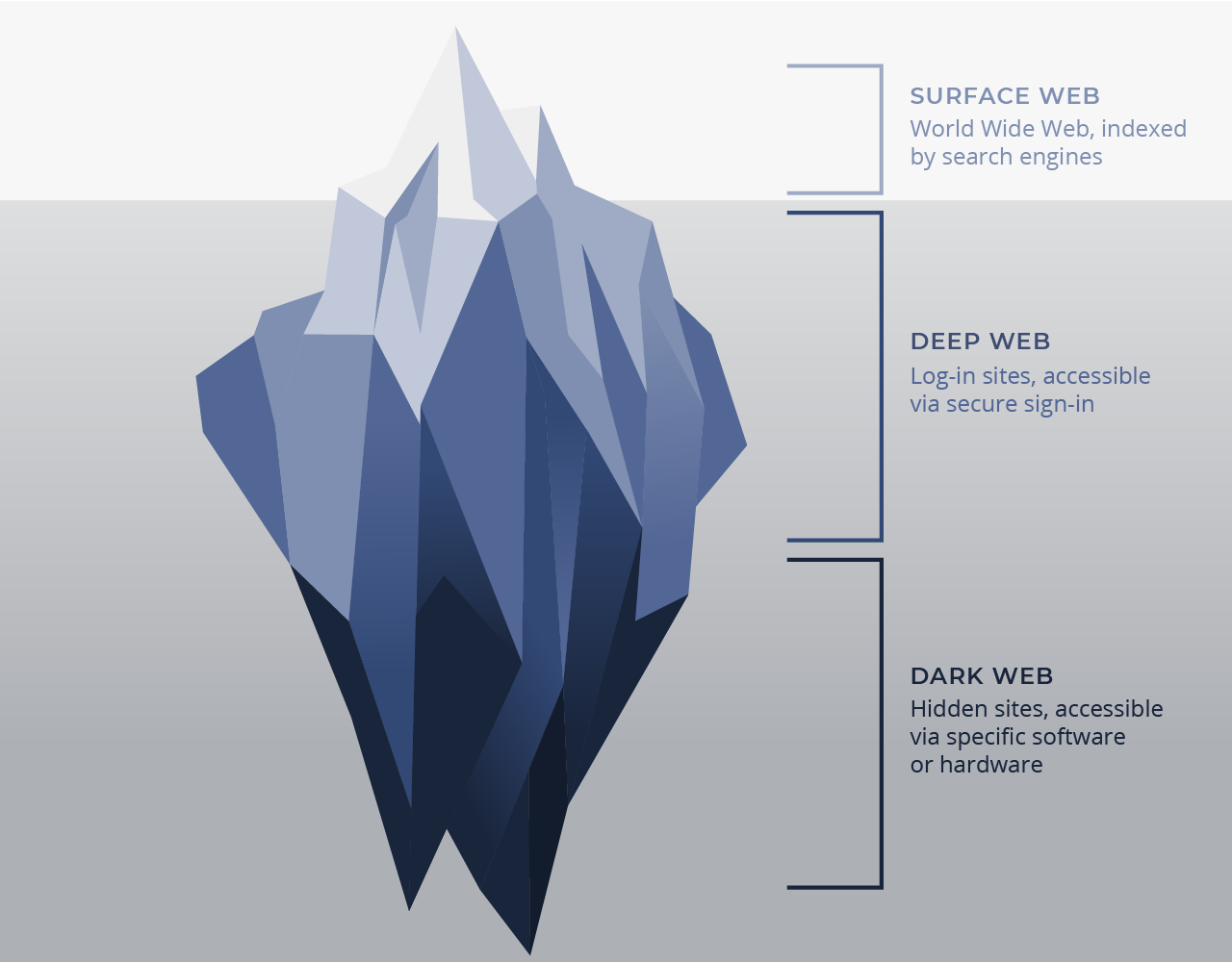


- #Levels of the internet iceberg registration#
- #Levels of the internet iceberg code#
- #Levels of the internet iceberg password#
Also, search engines do not always detect all backlinks from searched web pages. This content is referred to as pages without backlinks (also known as inlinks).
#Levels of the internet iceberg registration#
Private web: sites that require registration and login (password-protected resources).Non-HTML/text content: textual content encoded in multimedia (image or video) files or specific file formats not recognised by search engines.Sites may feature an internal search engine for exploring such pages. Limited access content: sites that limit access to their pages in a technical manner (e.g., using the Robots Exclusion Standard or CAPTCHAs, or no-store directive, which prohibit search engines from browsing them and creating cached copies).Dynamic content: dynamic pages, which are returned in response to a submitted query or accessed only through a form, especially if open-domain input elements (such as text fields) are used such fields are hard to navigate without domain knowledge.Contextual web: pages with content varying for different access contexts (e.g., ranges of client IP addresses or previous navigation sequence).Methods that prevent web pages from being indexed by traditional search engines may be categorized as one or more of the following: The first use of the specific term deep web, now generally accepted, occurred in the aforementioned 2001 Bergman study. 1 Deep Web program found in a December 1996 press release. Koll of Personal Library Software, in a description of the No. I call that the invisible Web.Īnother early use of the term Invisible Web was by Bruce Mount and Matthew B. It would be a site that's possibly reasonably designed, but they didn't bother to register it with any of the search engines. Bergman cited a January 1996 article by Frank Garcia: Non-indexed content īergman, in a paper on the deep web published in The Journal of Electronic Publishing, mentioned that Jill Ellsworth used the term Invisible Web in 1994 to refer to websites that were not registered with any search engine. While the deep web is a reference to any site that cannot be accessed by a traditional search engine, the dark web is a portion of the deep web that has been hidden intentionally and is inaccessible by standard browsers and methods. Wired reporters Kim Zetter and Andy Greenberg recommend the terms be used in distinct fashions. Since then, after their use in the media's reporting on the black-market website Silk Road, media outlets have generally used 'deep web' synonymously with the dark web or darknet, a comparison some reject as inaccurate and consequently has become an ongoing source of confusion. Those criminal activities include the commerce of personal passwords, false identity documents, drugs, firearms, and child pornography. The first conflation of the terms "deep web" with " dark web" happened during 2009 when deep web search terminology was discussed together with illegal activities occurring on the Freenet and darknet. It also includes paywalled services such as video on demand and some online magazines and newspapers.
#Levels of the internet iceberg code#
Such sites have uses such as web mail, online banking, cloud storage, restricted-access social-media pages and profiles, some web forums and code language that require registration for viewing content.
#Levels of the internet iceberg password#
ĭeep web sites can be accessed by a direct URL or IP address, but may require entering a password or other security information to access actual content. Bergman is credited with inventing the term in 2001 as a search-indexing term. This is in contrast to the " surface web", which is accessible to anyone using the Internet. The deep web, invisible web, or hidden web are parts of the World Wide Web whose contents are not indexed by standard web search-engine programs. Surface web and Deep web explained with iceberg chart


 0 kommentar(er)
0 kommentar(er)
